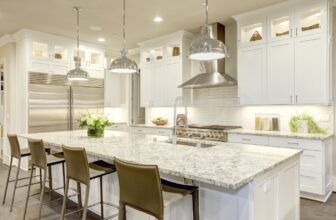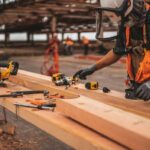
Renovating an Older Home: What You Need to Know Before You Start

Renovating an older home is like embarking on an adventure – full of excitement, but not without a few surprises along the way. Trust me, I’ve been there. One minute, you’re thrilled to uncover beautiful hardwood floors; the next, you’re staring at a plumbing system straight out of the 1950’s. Before you start tearing down walls or stripping paint, it’s important to know what you’re getting into. There’s a lot to consider, from the home’s structural integrity to the hidden cost that might pop up. But don’t worry; with the right plan and a bit of patience, you can turn that fixer-upper into your dream home while keeping its unique character intact. Let’s jump into what you need to know before rolling up your sleeves.
Assess the Condition of the Home
First things first: you need to know exactly what you’re working with. Before you get too far into the renovation plans, take a good, hard look at the bones of the house. Is the foundation solid? How about the roof? Are those load-bearing walls in good shape, or do they need reinforcement? These are big-ticket items that can make or break your project – literally.
Next up, plumbing and electrical systems. If your home was built more than a few decades ago, chances are the wiring and pipes are outdated and may not meet today’s safety standards. Get a professional to inspect these systems before you start knocking down walls. And don’t forget to check for potential hazards like asbestos, lead paint, or mold. Trust me, you don’t want to find out about these halfway through a renovation – it’ll save you a lot of headaches (and money) if you know upfront what you’re dealing with.
Knowing the condition of the house from the get-go helps you avoid nasty surprises and make sure you’re making informed decisions every step of the way.
Understand the Costs Involved
Let’s go over numbers – because, let’s face it, renovating an older home isn’t cheap, and you need to be prepared for the costs that come with it. Start by setting a realistic budget, but here’s the thing: always, and I mean always, set aside a contingency fund. When you’re dealing with an older home, there are bound to be a few surprises hiding behind those walls. Maybe it’s a rotten floor joist or outdated electrical wiring that needs a full overhaul. Having an extra 10-20% of your budget saved for these unexpected expenses will keep you from panicking when they inevitably pop up.
Then, think about permits and fees. Depending on the scope of your renovation, you may need several permits from your local municipality. These can range from a few hundred thousand dollars, so be sure to factor them into your budget early on. Finally, remember that labor and materials can vary significantly, especially if you’re using specialized materials to match the home’s original features. Getting quotes from multiple contractors will give you a better idea of what to expect and help you plan more effectively.
Bottom line: expect the unexpected and give yourself some financial wiggle room. It’s all part of the process when working with a home that’s got a bit of history to it.
Plan for Historical Preservation
One of the most rewarding parts of renovating an older home is preserving its unique character. After all, you bought this place because it has a story, right?

So, take some time to think about which original features you want to keep. Maybe it’s intricate molding, the vintage hardwood floors, or those charming stained-glass windows. These elements add a lot of personality and value to the home, and keeping them intact will help maintain its original charm.
That said, it’s a good idea to bring in some experts if you’re working with historical elements. An architect or contractor who specializes in older homes can help guide you through the process, making sure you’re preserving the right features while updating what’s necessary. They’ll also be familiar with local regulations and guidelines, which is a big plus – some neighborhoods have strict rules about what you can and can’t change in a historically significant property.
Preserving the character of your home doesn’t mean you can’t modernize, but it does mean you should do it thoughtfully. Blend the old with the new in a way that feels seamless so the home keeps its original charm while fitting into modern life.
Prioritize Structural and Safety Updates
Alright, now let’s get down to the nuts and bolts: safety. Before you start dreaming about paint colors or new countertops, make sure the house is structurally sound and safe to live in. This means tackling any major structural repairs right off the bat. We’re talking about things like fixing a sagging roof, reinforcing the foundation, or replacing any damaged load-bearing walls. These aren’t the most glamorous parts of a renovation, but they’re the most important.
Once you’ve got the structural issues sorted, move on to the safety updates. Older homes often have outdated electrical wiring or plumbing that doesn’t meet today’s standards. Upgrading these systems isn’t just about convenience; it’s about preventing potential hazards like electrical fires or water damage. Get a licensed electrician and plumber to bring everything up to code – trust me, it’s money well spent.
And hey, modernizing doesn’t have to mean losing the charm. You can still keep those vintage touches that make the house special while ensuring it’s safe and sound. For example, you might update the kitchen or bathroom with modern fixtures while preserving the classic tile work or cabinetry. It’s all about finding that balance between maintaining the home’s character and making it a safe, comfortable place to live.
Consider Modern Comforts and Efficiency
Now that you’ve got the basics covered, it’s time to think about how to make your home not just livable but comfortable and efficient. Start with energy efficiency upgrades. Older homes are notorious for being drafty and costly to heat or cool, so consider adding insulation in the attic, walls, or crawl spaces. Upgrading to energy-efficient windows can also help keep your home warm in the winter and cool in the summer – plus, they’ll save you some cash on those utility bills.

Don’t overlook your HVAC system, either. Older homes often come with outdated heating and cooling systems that are both inefficient and unreliable. Consider installing a modern HVAC system that’s designed to handle the size and layout of your home. Pair it with high-efficiency air filters, like pure carbon air filters, to improve indoor air quality. Trust me, having clean, healthy air makes a huge difference, especially if you’re spending more time indoors. It can help reduce allergens, dust, and other particles that affect your breathing and overall comfort.
While you’re at it, think about integrating some smart home technology – like programmable thermostats or smart lighting – to make your daily routines a little smoother. These upgrades can be seamlessly blended into the design of your older home without taking away from it’s charm. Remember, the goal is to do the homework for you, not the other way around.
Conclusion
Renovating an older home is definitely not for the faint of heart, but with the right approach, it can be one of the most rewarding projects you’ll ever take on. The key is to start with a solid plan: know the condition of your home, budget for the unexpected, and preserve the historical elements that make it unique. Prioritize safety and structural updates first, then think about how to modernize the space with comfort and efficiency in mind.
Remember, the goal is to bring new life to your home while keeping the character that made you fall in love with it in the first place. Take your time, enjoy the process, and know that every bit of effort you put in will be worth it when you’re living in a home that perfectly blends the old with the new – a space that truly feels like your own.



















































































